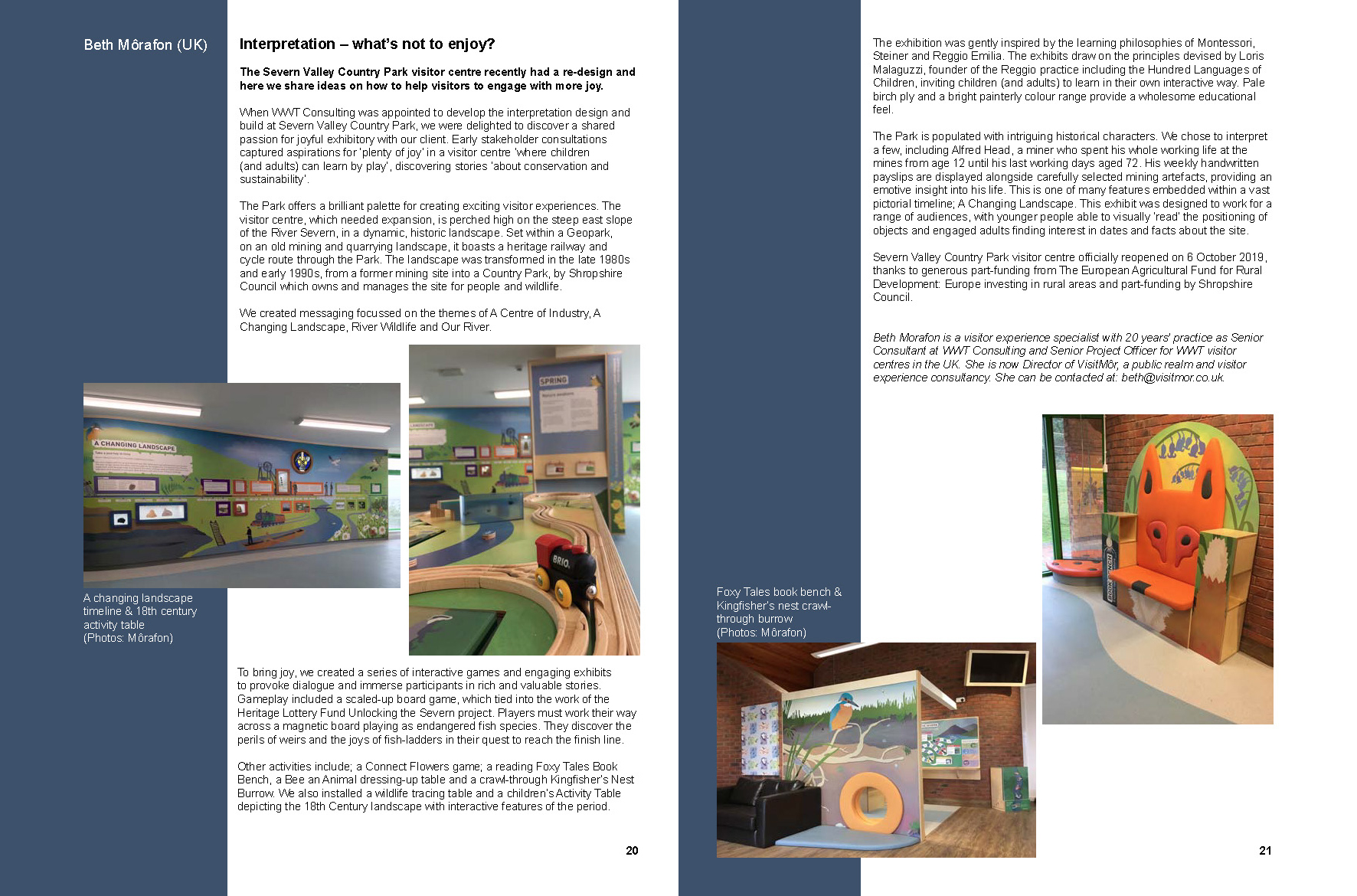A grand interpretation tour led by heritage
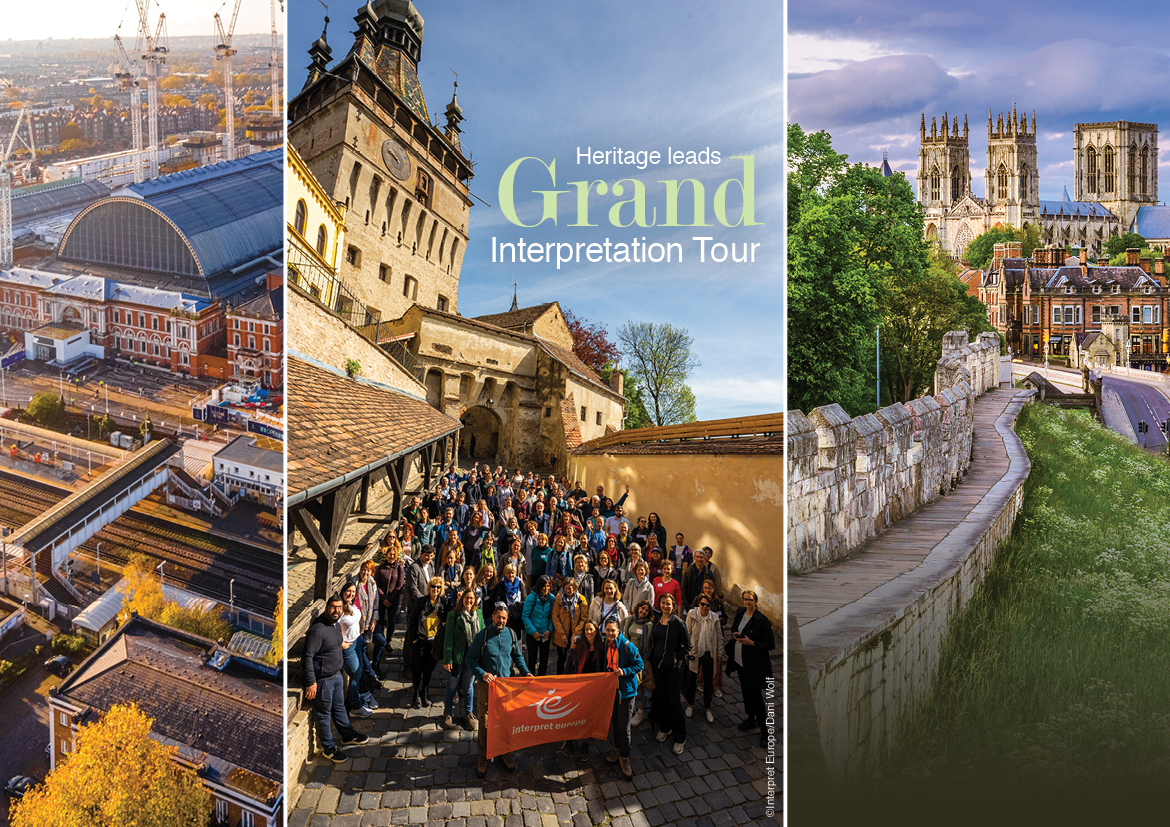
A grand interpretation tour
A grand interpretation tour aligned in a constellation of events during May 2023. Three professional forums set across Europe and the UK spanned a week-long heritage journey. Along the way, there were opportunities for VisitMôr to explore bright illuminations and embed lasting connections.
It provided a pilgrimage, albeit without the walking or rhetoric of a true pilgrimage. But, it was a heartfelt quest, to explore places, people, and practices; tracing threads that stretch from modern day to deep in the Middle Ages, to ignite new-found passion and interest. This feature shares the joy found in the journey, alongside images and anecdotes of places rich in heritage, imbued with meaning and significance. The unique visitor experience left a lasting sensory imprint, whether the soprano folk siren of song, performed by young dancers in smocks and Lederhosen, or the artfully curated colours of the houses of a Medieval citadel painted in warm shades of olive to soft pastel.
The journey began in Olympia, London at the Museums + Heritage Show, representing the Association for Heritage Interpretation (AHI). Next, there was a pilgrimage to Romania and the Medieval walled town of Sighișoara for the Interpret Europe conference and the post-conference tour. Finally, back in the UK, the journey rounded at the Heritage Trade Up in York with the School for Social Entrepreneurs.
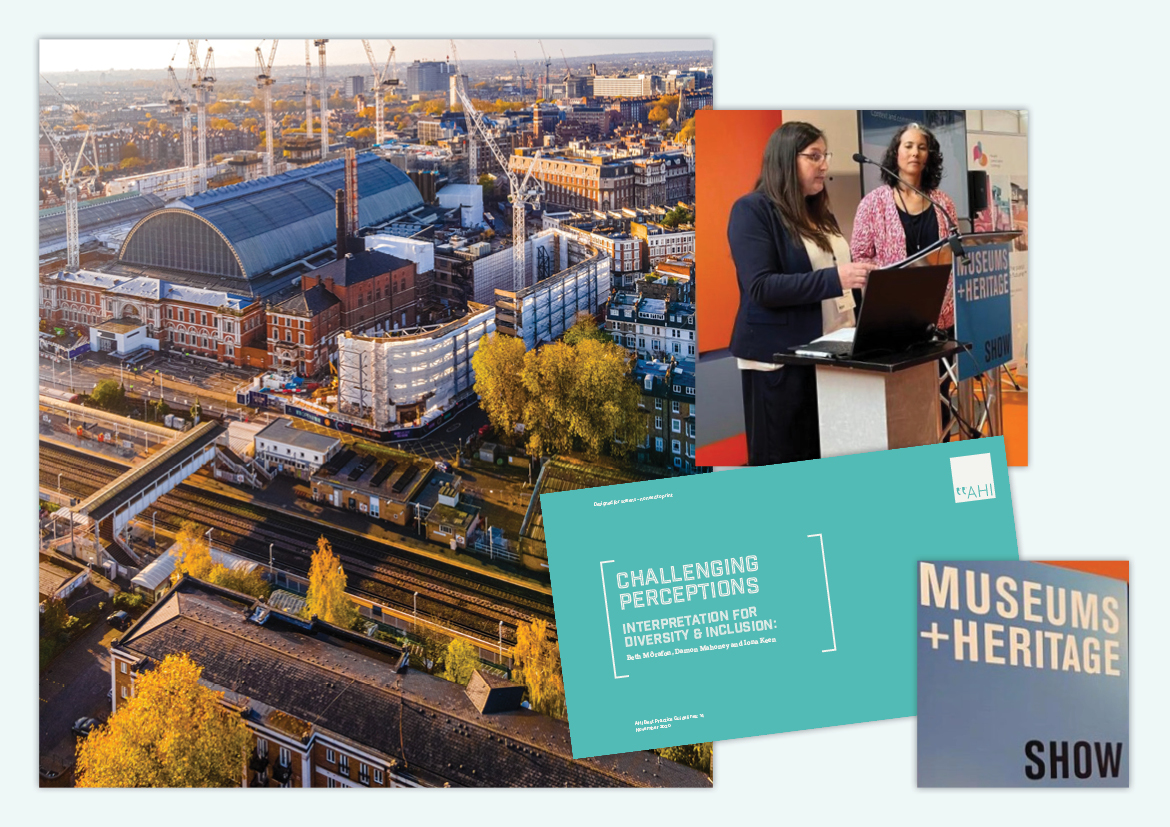
Begin with best practice
At the Museums + Heritage Show, the grand interpretation tour launched with an introduction to the AHI Best Practice Guide; Interpretation for Diversity and Inclusion. Guide writers Beth Môrafon* and Iona Keen** presented strategies to forge greater equity in a packed auditorium.
They shared copies of the guide, and its content, and discussed the careful processes that helped to shape it, including exemplary case studies by authors from Bristol Museums, the British Museum, the National Trust, and Iconic Black Britons. It’s one of 16 free guides available to AHI members. Live recordings of all the talks are available from the Museums + Heritage Show.
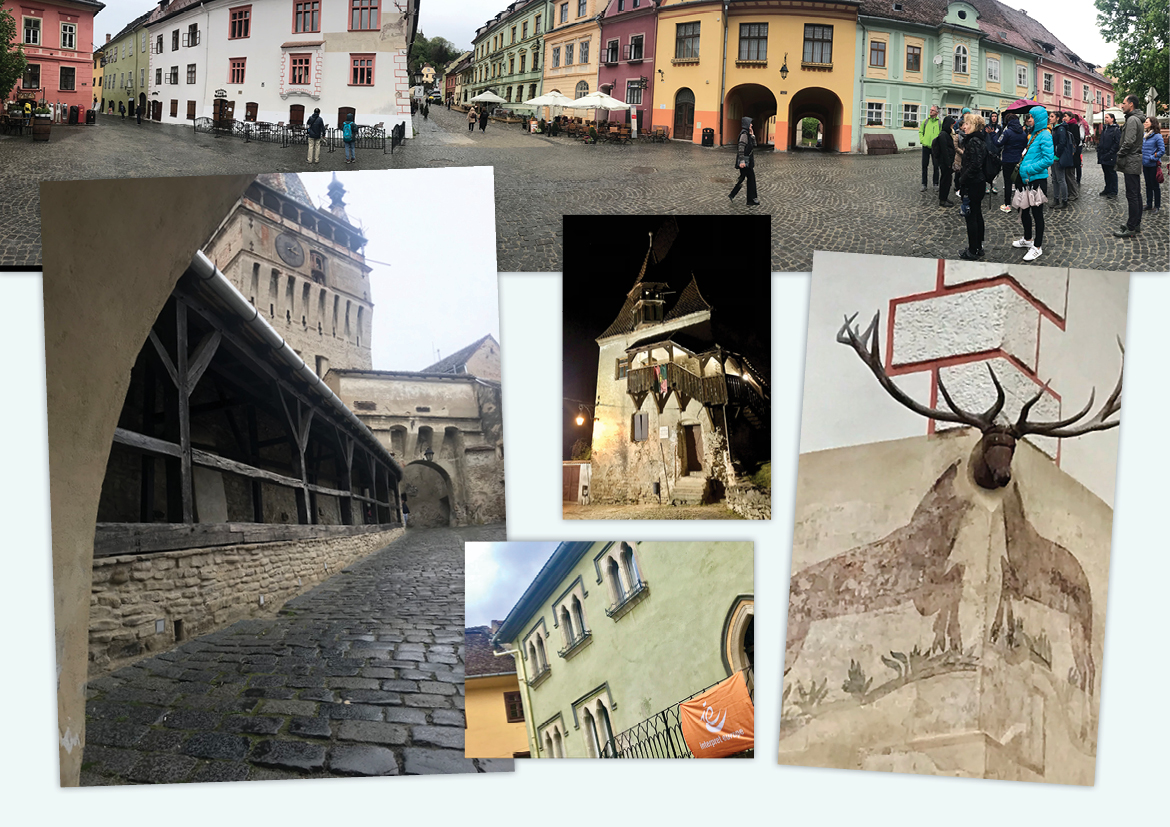
Meet up in the Middle Ages
The heart of the quest took us to a Transylvanian citadel for the Interpret Europe conference in Sighișoara, Romania.
Set between four Medieval gatehouses and across a range of UNESCO landscapes, the conference explored themes of connection and community, asking delegates to consider ways of Creating Learning Landscapes through Heritage Interpretation.
Presentations, study days and post-conference tours provided a range of highlights.
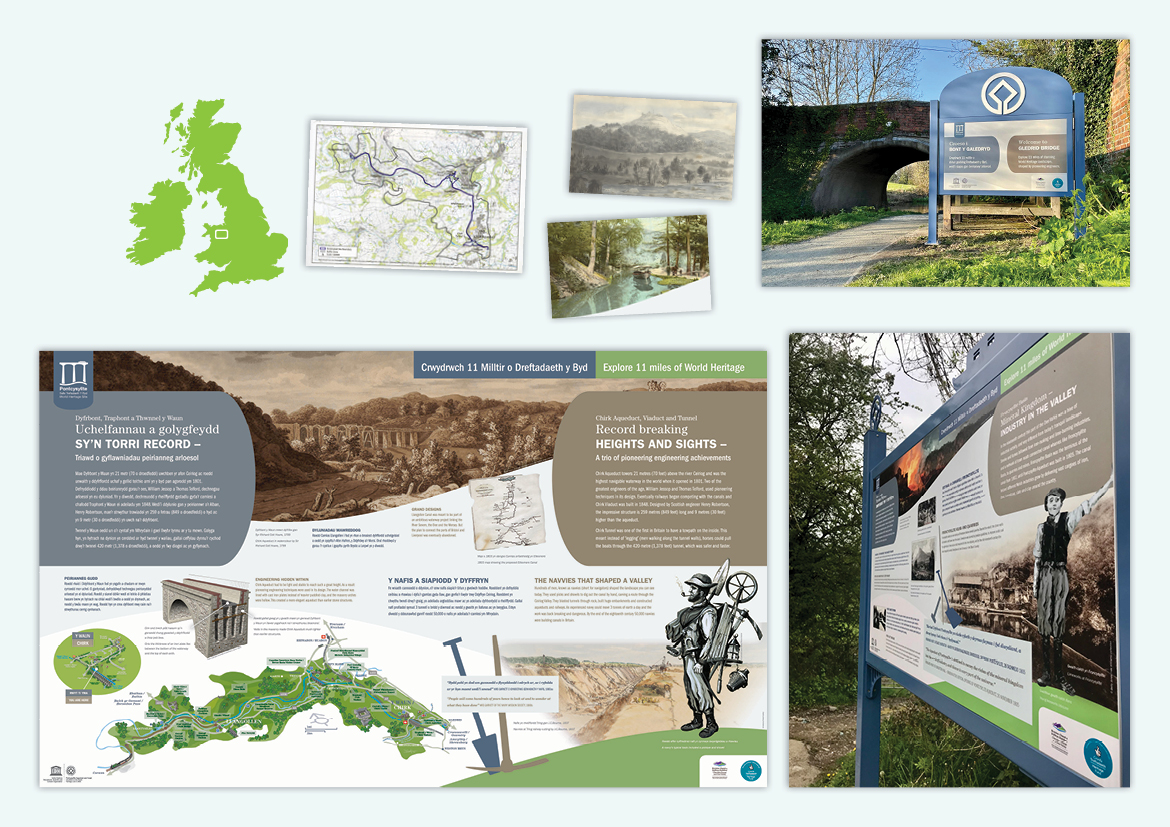
Presenting the picturesque
Amongst a rich programme of presentations for the first day, VisitMôr presented Landscapes; interpreting the picturesque***. The paper shared insight into the development of interpretation across 11 miles of UNESCO World Heritage Site in the Clwydian Range and Dee Valley AONB. It drew comparisons between work on the original interpretation plan and the final interpretation scheme for the Our Picturesque Landscape partnership project.
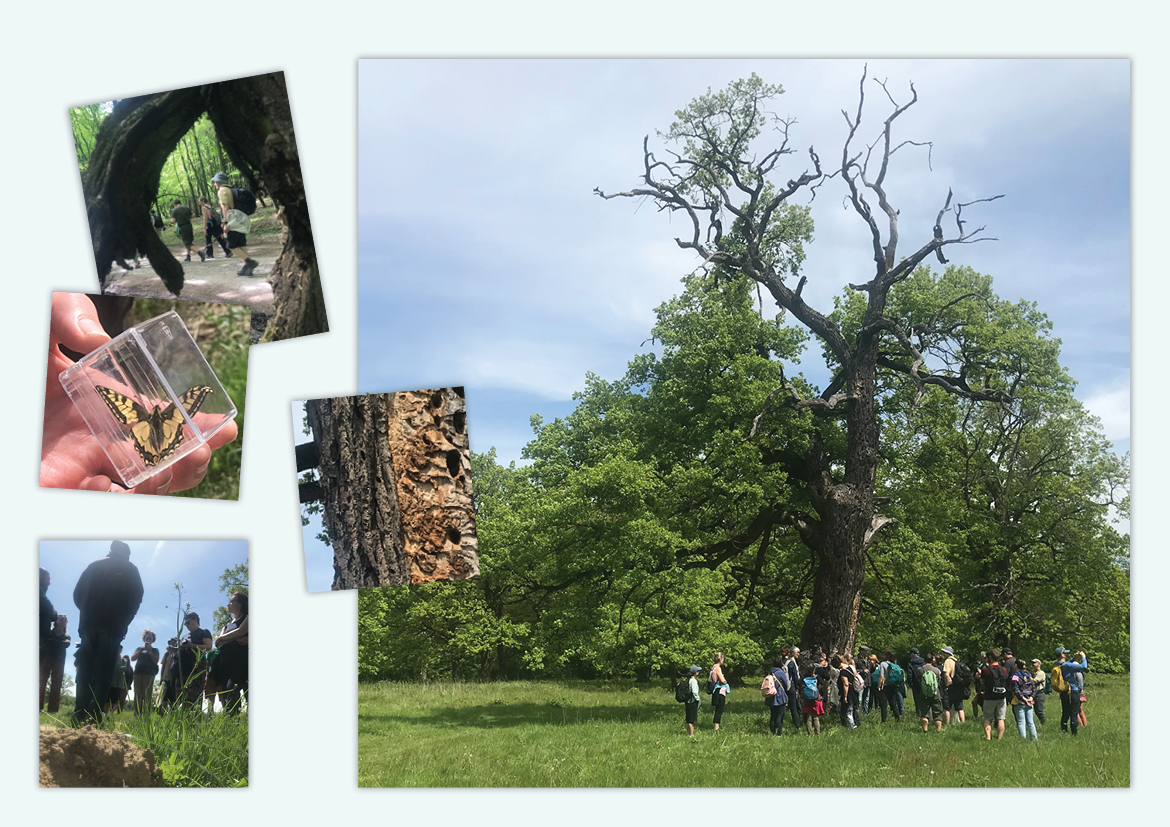
Beetles of Breite
On the morning of the study trip, delegates explored the ancient woods of Breite Oak Forest Reserve. At 180 acres, it’s the largest grassland plateau in Europe and is home to eight centuries of forest heritage, predominantly oak, hornbeam and beech.
Unusual species included the rare yellow bellied toad, which thrives in puddles and ponds historically made by water buffalo and cattle. Soil from ant hills dotted the meadows. It was explained the ants’ survival was interconnected with the survival of specific plants and moths in a symbiotic relationship. Bark-burrowing beetle holes pocketed the trunks of ancient oaks and we heard tell of wolves and bears deep in the forest.
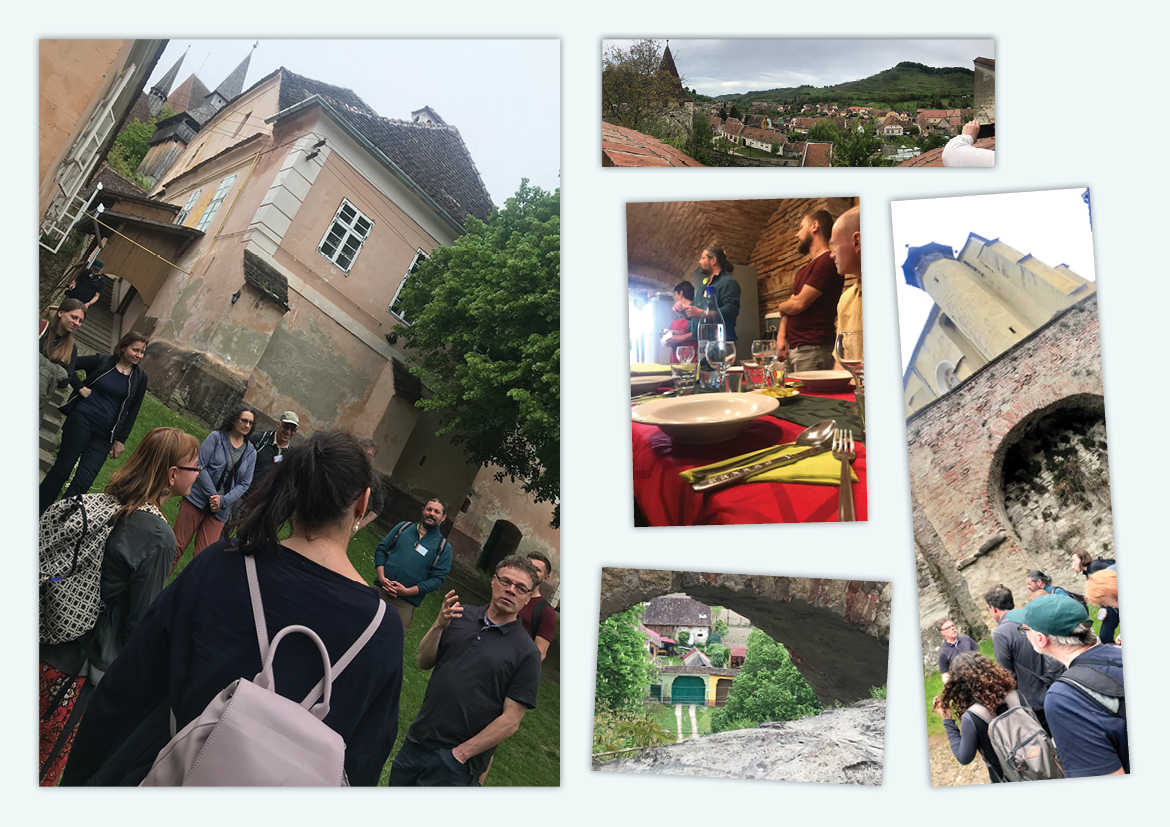
A fortified feast
Lunch was in Biertan, one of the most important Saxon villages in Transylvania. In a low-vaulted cellar, the group congregated on linen-dressed trestles to share carafes of locally brewed deep red wine and sup hearty soup, followed by a clear liquor chaser.
After lunch, delegates scrambled up the hill to Biertan church, soaking up bright panoramic views across the village and the rural landscape beyond. The tour was led by the local priest, who shared tales drawn from its time as the seat of the Lutheran Evangelical Bishop between 1572 and 1867. The intricate but robust locks on the innermost church door illustrated the space as a last refuge for communities against invasion.
At the ‘martial prison‘, the tour guide shared how couples seeking divorce were locked away together until they reconciled. The couple’s room was furnished with a single bed and blanket, one table and chair, and a bowl and spoon.
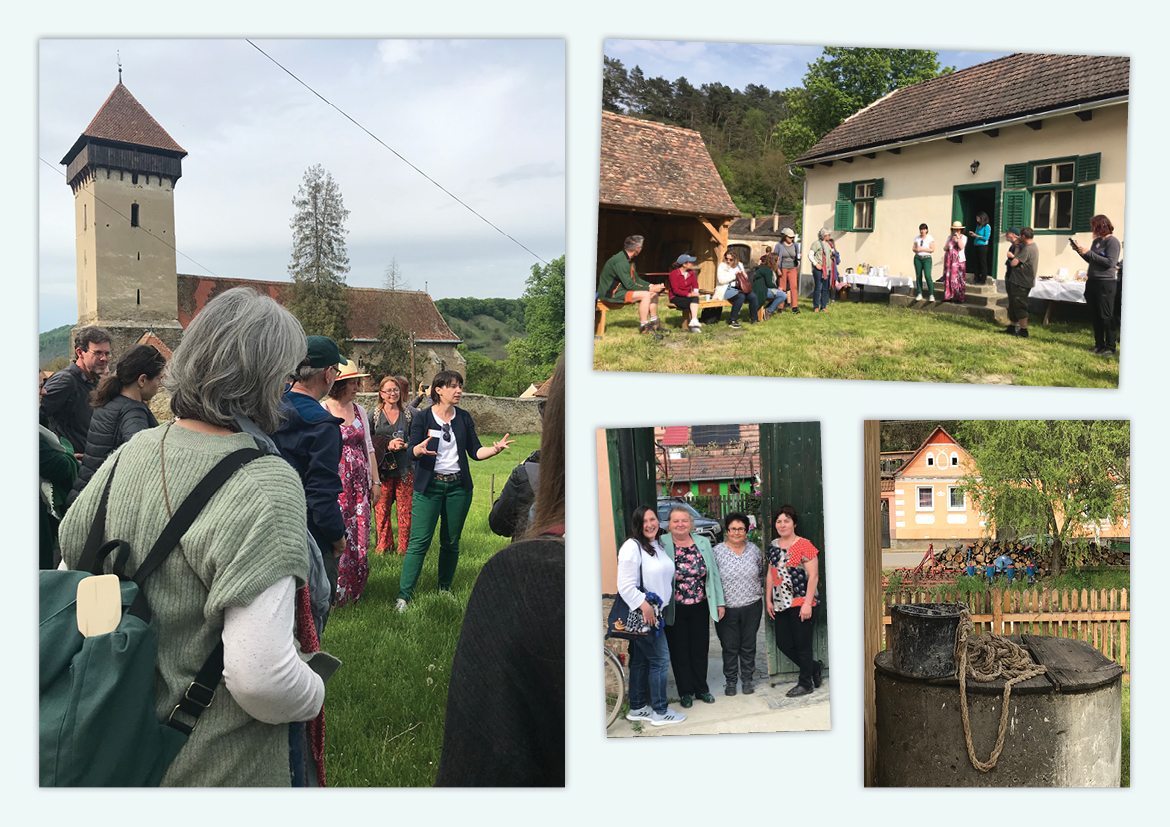
Mălâncrav crafts
The study day ended at the Saxon village of Mălâncrav. Warm-hearted women plied afternoon tea and gave talks at a local community garden nestled between rows of powder-coloured houses. Centuries of conquest and invasion were detailed in the tall gated gardens and high-set windows.
Spirit of place resounded through the garden with the passing clatter of horse-drawn carts; village farmhands, or perhaps family members from the Roma communities outside the village, pelted past towards the stepped agricultural terraces beyond in their low-slung open wagons.
Further down the long straight road, the group was welcomed into a courtyard of cottage industry. Here, traditional skills were taught intergenerationally by a passionate craftswoman, sharing knowledge of weaving, embroidery, and basketry. With workshops hand-built by her husband, she sought to nurture heritage craft and connection for communities in the village and for those living at its fringes.
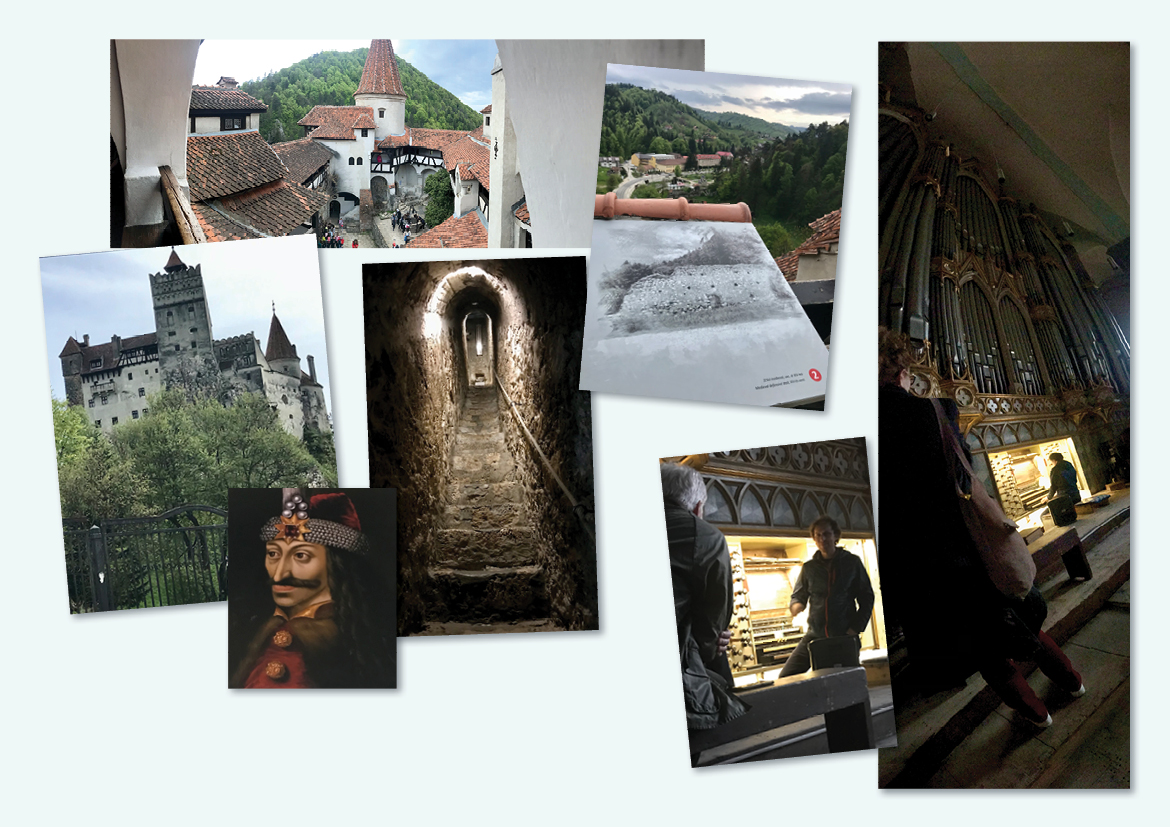
Wine, dine, and the divine
The post-conference tour provided an opportunity to explore Bran Castle for a dalliance with Bram Stoker’s Dracula, set alongside historical characters such as Vlad the Impaler. Met by a vampiresque tour guide, the overall themes of the interpretation floundered, shaped by a desire for the castle’s narrative to meet all audiences.
Content swung from factual and historic to the occult, tapping into the dark tourism market. As the brochure states, ‘We invite you to experience the history, the myth, the intrigue and the magic.‘ The castle itself was an impressive spectacle, worth the visit. Sheer walls and turrets extended vertically from the steep and foreboding outcrop of rock. It loomed large, strategically dominant in its position over the regions bellow.
The castle tour was followed by an organ concert staged across three local churches. It was astonishing to learn organs were first designed as instruments of war, to strike terror into opponents. Later they became a theatrical tool; a device used to conjure drama and momentum.
Traditionally organs were deployed to announce the arrival of powerful members of the church via thunderous chord combinations. Set within the voluminous churchscapes, the organ concerts were astounding and moving, a far cry from their warlike origins.
The tour finished with a beautiful meal in a restaurant just off Piaka Sfatului, the main square in Brașov. Supper was accompanied by a compèred wine tasting with refined tales from the vineyards.
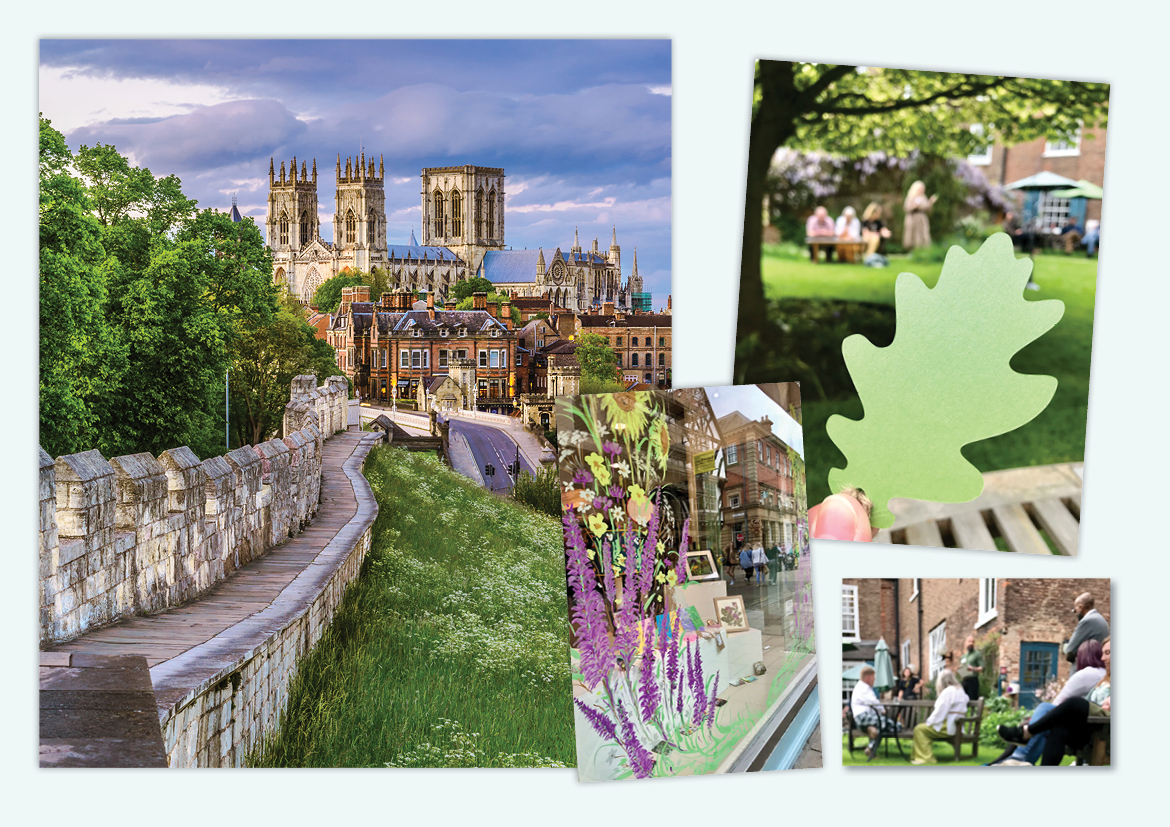
End at the bar
Back on UK shores and destined for The Bar Convent, York, it seemed the tour might end at a pub.
Interestingly, the venue was neither a bar nor a pub. Instead, it was a longstanding refuge with a 300-year history; providing sanctuary for learning and social change. A fitting destination for UK heritage leaders to gather for the Heritage Trade Up residential with the School for Social Entrepreneurs, supported by the Heritage Fund.
Cohorts from London, Birmingham, and Edinburgh met for the first time. The event provided space to explore best practices with EDI activities. Unusual propositions provoked thoughtful debate. Participants networked and explored the city, learning the secret history of the building; a Catholic convent school for girls, founded and run by Mother Bedingfield, at a time when teaching girls Catholicism was punishable by death.
After a beautiful evening meal, prepared by a local refugee charity, some folks did make it to the pub – but that’s another story.
The following day, we wound our way home, dazzled by the scope of events. We knew the experience provided enrichment beyond the sum of its parts. It carved out space for something big and meaningful. A pilgrimage, to connect with longstanding and newly-found associates, sharing skills, tandem train rides, suppers, stories, and social serenades; it was indeed a grand interpretation tour.
Footnotes
*Beth is the Director of VisitMôr and chaired AHI from autumn 2021-2023.
**Iona is Vice-Chair of the South West Federation and is an AHI Critical Friend.
***To cite the #eicon23 paper, Landscapes; Interpreting the Picturesque, see page 138.

